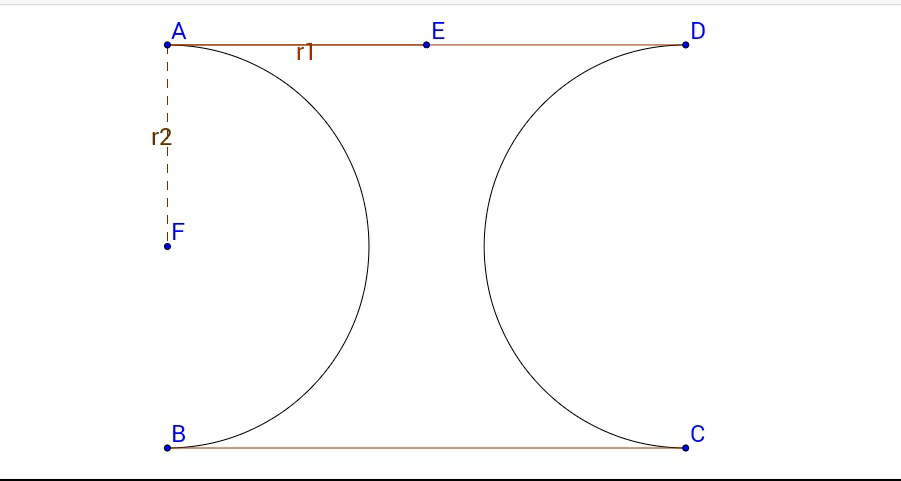
Question and Answers Forum
AllQuestion and Answers: Page 1956







Pg 1951 Pg 1952 Pg 1953 Pg 1954 Pg 1955 Pg 1956 Pg 1957 Pg 1958 Pg 1959 Pg 1960
|
Question and Answers Forum |
AllQuestion and Answers: Page 1956 |
| find the value of Δ′Λ b and (B′U A) 𝚲 B if U={1,2,3,4,5,6,7,8,9,10} A={2,4,5,6} B={1,5,8,9} Λ is a unoin |
| ∫_0 ^(Π/2) ((sinx)/(sinx + cosx)) dx |

|
| If a polynomial p(x) satisfies the identity x^(2015) + x^(2014) + x^(2013) + 1 = (x^3 + x^2 + x + 1)p(x) Find p(−1) |
| For any number x>1:x∈Z x can be expressed as a combination of numbers multiplied together. e.g. 10=5×2 20=5×4=5×2×2 100=10×10=5×2×5×2 ∴ x = p_1 ^e_1 p_2 ^e_2 ...p_n ^e_n where p_n is the nth prime factor e_n is the exponent e.g. x=810=8×10×11=4×2×5×2×11 x=2^4 ×5^1 ×11 ⇒ p_1 =2, e_1 =4, etc. let ω(x) be the number of discrete prime factors ∴ ω(x)=n x=Π_(t=1) ^(ω(x)) p_t ^e_t Therefore the number of prime factors is given by: ℧(x)=Σ_(t=0) ^(ω(x)) e_t Question How many combinations are there to represent x as the product of k numbers? (exluding 1. e.g. 10=10×1×1×1×1) e.g. 3 number ⇒ 30=3×10=3×5×2 ℧(30)=3!=6 ways My working so far: x=a×b×...×k combinations of k numbers x=(a_1 ×a_2 ×...×a_(ω(a)) )...(k_1 ×...×k_(ω(k)) ) a_1 , a_2 , ..., k_1 , etc are the prime factors of a, b, ...., k ∴ any arramgement with the bracets work so long as k brackets are present let C_k (x) be the combination of ways to express x as the product of k integers (not equal to 1). x=(Π_(t=1) ^(ω(a)) a_t ^e_t )(Π_(t=1) ^(ω(b)) b_t ^e_t )...(Π_(t=1) ^(ω(k)) k_1 ^e_t ) C_k (x)=??? |

|
| 7a_1 +7^2 a_2 +∙∙∙+7^n a_n =3^n −1 Σ_(n=1) ^∞ (a_n /3^(n−1) )=? |
| Prove that [((n+1)/2)]+[((n+2)/4)]+[((n+4)/8)]+[((n+8)/( 16))]+........=n. Such that [.] denotes greatest integer function and n∈N. |
| x−y and y−x x={−2,−1,0,2,5} y={0,5,7,8,10} |

|
| Q1. A balloon in the shape of cone surrmo surmounted by hemispherical top . the daimeter of balloon is equal to hieght of cone . find the rate of change of volume of the balloone with respect to its total height h . |
| many thanks. |

|

|
| Find the value of x ((√(2 + (√3))))^x + ((√(2 − (√3))))^x = 4 |

|
| Q1.if y^(1/n) +y^(−1/n) =2 find (d^2 y/dx^2 ) . |
| um numero somado ao seu triplo e igual a 36. qual e esse numero? |
| need help with step by step. thanks. x(x+4)(x−1)=2x(x+4) |
| A soma de um numero com seu sextuplo e ingual a 280.Quale e o numero? |
| S=Σ_(t=1) ^n (−1)^t t^k k^(−n) , k>1 Solve for S |
| lim_(x→∞) ((√(x^2 +x+1)))−((√(x^2 +1))) < |
| What are the possible solution satisfying x^y = y^x |
| w,x,y,z are digits in respective base system and a,b are bases. Find out an example/examples which satisfy the following wxyz_a +wxyz_b =wxyz_(a+b) |

|
| Let a and b be positive integers such that ab+1 divides a^2 +b^2 . Show that ((a^2 +b^2 )/(ab+1)) is the square of an integer. (IMO 1988 Qu.6) |
Pg 1951 Pg 1952 Pg 1953 Pg 1954 Pg 1955 Pg 1956 Pg 1957 Pg 1958 Pg 1959 Pg 1960 |